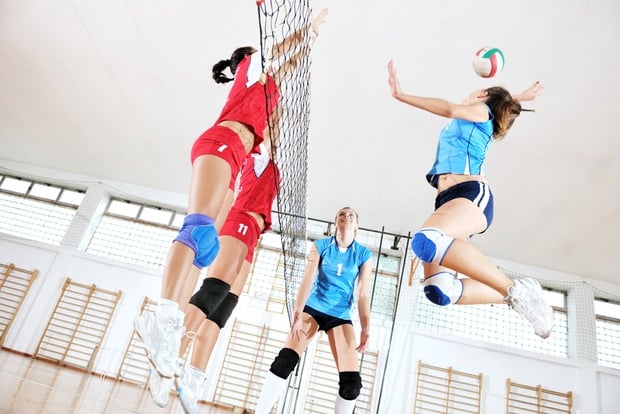Female athletes are more likely get injured than males, and one’s sport and lack of upper-body strength may have something to do with it, according to a study published today in Sports Medicine, Arthroscopy, Rehabilitation, Therapy & Technology.
For the study, researchers first had NCAA basketball, volleyball, and ice hockey athletes undergo fitness tests, including pushups, curl-ups, and vertical jumps. Researchers wanted to test how preseason fitness measures predicted athletes’ times to injury. They chose those three sports since they require use of both upper and lower extremities and both genders are involved.
Then postseason, the athletes self-reported any injuries they suffered during the season and when they occurred. Seventy-six percent of the 86 athletes reported one or more injuries, and more than half suffered new injuries. The most common type of injuries occurred in the lower body and were typically muscle or tendon strains.
Researchers found that time to injury was significantly shorter for female athletes, volleyball players in particular. The shortest time to injury was followed by women’s hockey and women’s basketball. It took male hockey players the longest time to get injured.
But why are female athletes more likely to get injured? Researchers said it may have to do with one’s upper-body strength. After comparing the athletes’ preseason fitness scores and their rates of injury, they found that those who scored low on the pushup test were associated with shorter time to injury. That said, researchers suggest that females who work to increase their upper-body endurance may be more likely to avoid injury.
Somewhat surprisingly, athletes who could jump the highest were more likely to suffer injuries during the season, too. Although athletes with high vertical jumps are desirable in sports like volleyball and basketball, “this greater performance attribute may be associated with risk of injury,” researchers wrote. In particular, females who jump higher are more likely to suffer knee injuries as a result of high intensity and high-impact plyometric training.
The full study is available through the SMARTT journal’s website.



















